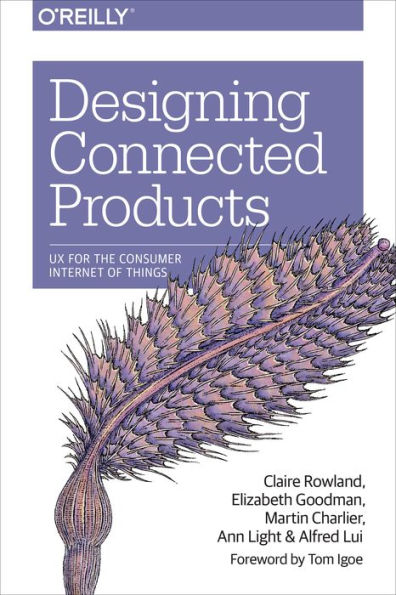
Designing Connected Products: UX for the Consumer Internet of Things
726
Designing Connected Products: UX for the Consumer Internet of Things
726eBook
Related collections and offers
Overview
Networked thermostats, fitness monitors, and door locks show that the Internet of Things can (and will) enable new ways for people to interact with the world around them. But designing connected products for consumers brings new challenges beyond conventional software UI and interaction design.
This book provides experienced UX designers and technologists with a clear and practical roadmap for approaching consumer product strategy and design in this novel market. By drawing on the best of current design practice and academic research, Designing Connected Products delivers sound advice for working with cross-device interactions and the complex ecosystems inherent in IoT technology.

Product Details
| ISBN-13: | 9781449372712 |
|---|---|
| Publisher: | O'Reilly Media, Incorporated |
| Publication date: | 05/18/2015 |
| Sold by: | Barnes & Noble |
| Format: | eBook |
| Pages: | 726 |
| File size: | 34 MB |
| Note: | This product may take a few minutes to download. |
About the Author
Claire is an independent UX design, research and product strategy consultant working on internet of things products and services for mainstream consumers. She has a particular interest in the use of technology in mundane, everyday activities. Previously, she worked on energy management and home automation services as the service design manager for AlertMe.com, a connected home platform provider. Prior to this, she was Head of Research for the London studio of design consultancy Fjord, where she led Fjord's involvement in the Smarcos EU consortium researching the interusability of interconnected embedded devices and services. She has worked in UX design and research for mobile, multiplatform and web services since 1997.
Elizabeth Goodman investigates the possibilities and perils of emerging technologies in her design, research, and writing. Her 2014 PhD from UC Berkeley's School of Information focused on human-computer interaction and design practice for novel technologies, and was supported by National Science Foundation and Intel fellowships. In 2013 she authored the second edition of Observing the User Experience, a widely-used handbook of design research methods. Her work has taken her from exploratory research and design teams at Intel, Yahoo!, and Fuji-Xerox to her current position with 18F, a service and product design group within the US government aimed at making federal agencies more efficient, more transparent, more accessible, and more accountable to the people they serve. Elizabeth speaks widely on the design of mobile and pervasive computing systems at conferences, schools, and businesses. She lives in San Francisco with her husband and two children. She tweets as @egoodman.
German-born Martin Charlier is an independent design consultant based in London. Martin is a designer with experience across new media art, industrial design, interaction design and design research. His speculative design work has been awarded by the Royal Society of Arts, and he is a fellow of the organization.
He has previously worked at innovation firm frog design, cutting-edge art collective rAndom International and digital service design consultancy Fjord.
While at Fjord he was involved in the EU-funded Smarcos research project investigating design for the Internet of Things. With his broad range of design skills, Martin's focus is on holistic product and service experiences going across the digital and the physical.
Alfred Lui has been a user experience designer for consumer products since 2004. He created user interfaces and digital services for companies around the world, including The BBC, Motorola, PayPal and Jawbone. In London, he was part of a EU-funded research project to investigate best practices in designing networked objects. Soon after he moved to San Francisco in 2011, he founded the San Francisco Internet of Things Meetup to build a local community around the topic. Alfred frequently writes and speaks about user experience design for the Internet of Things.
